By Jeffrey A. Rendall, Images Courtesy of Bridgestone Golf
COVINGTON, GA – Walking through the tall grass at your local golf course, you’re frustrated because one, you’ve just hit a shot badly off-line, and two, if you don’t find your ball, you’re penalized on the scorecard. It also doesn’t help that it hurts in your wallet, too.
Golf balls aren’t cheap – at least the ones you like to play.
At that moment you step on what feels like a ball, and you reach down and discover the truth in your good fortune. Turns out it’s not yours, but to most of us, the next question is ‘so what?,’ and you’re instantly a little less ticked off that at least you’ve found a ‘replacement’ for the one that’s still imprisoned in this six-inch deep fescue.
But what you didn’t know is that this ‘new’ ball could actually hurt your game.
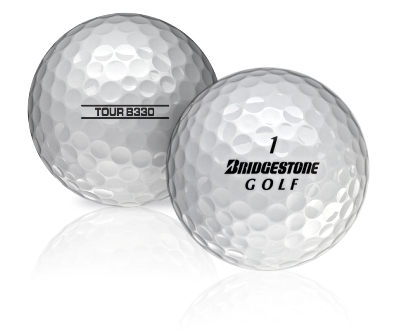 |
I certainly didn’t realize the destructive nature of playing the wrong ball until I talked with the experts at Bridgestone Golf, all of whom felt that playing a ball that’s fit for you is essential – and the alternative is to cost you performance.
“Not only is it possible, it is probable (that it could hurt your game),” remarked Brandon Sowell, Director of Marketing for Bridgestone Golf, when asked what could happen if you’re playing a ball that’s best fit for someone else. “In the 100,000 live consumer ball-fittings we’ve done, we found that in seven in ten cases, players are employing a ball that caused them to sacrifice distance and accuracy.”
Most of us can’t afford to let go of either, so the seven-in-ten figure is really pretty striking. Who would’ve thought?
“In the same manner that playing clubs that don’t fit will undoubtedly put a player at a disadvantage, the wrong ball can negatively impact a player’s game as well – especially since you hit the ball on each and every shot,” Sowell added.
Fortunately for the ill-informed, Bridgestone has developed a system to ‘fit’ you to your golf ball. “The best and most precise way to determine which golf ball fits a player’s game is for them to participate in a ball fitting on a launch monitor and see first-hand the side-by-side performance difference between balls.”
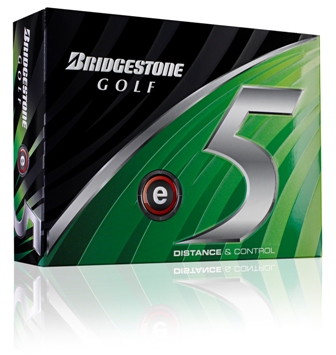 |
Since not many of us have a launch monitor down in the basement – or even in the local golf shop, Bridgestone provides one online in the form of a B-Fit technician. While it doesn’t have the same degree of accuracy that a launch monitor-based ball fitting offers, this method allows you to engage in a two-way dialogue rather than just a form to fill out that generates an answer.
I’ve tried it – and it works. The B-Fit system recommended a Tour B330-RX ball for me, which was somewhat of a surprise since I’d always thought I should play the highest swing-speed balls from each manufacturer (the Bridgestone Tour B330 (no RX) ball is for the pros who really launch it). My swing speed is on the lower end of the scale (for the high-speed balls), though other criteria must have showed the B330-RX to be the better fit for me.
Bridgestone has a number of balls to match all skill levels, of course, including the ‘e’ series: e5 (distance and control), e6 (straight distance) and e7 (pure distance). All are designed for average players looking for more performance.
All three also have ‘dual dimple’ technology. Again, Sowell explains: “Similar to the way an aircraft uses different parts of the wing at different angles during takeoff and landing, the engineers at Bridgestone have designed a golf ball to take advantage of different areas of its cover, optimizing aerodynamics at launch and during descent.”
He continues, “Bridgestone\'s new Dual Dimple Technology features a deeper inside dimple specifically geared to help increase thrust power at launch, and an exterior dimple to help promote a shallower landing angle for more rollout. The result is improved distance performance across the board.”
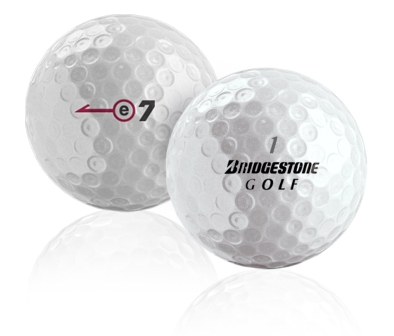 |
And you won’t even need a runway to ‘fly’ it.
The performance of all of Bridgestone’s golf ball products is also enhanced by multi-layer technology, something that’s even further apart from our basic understanding. It’s a long way from the days of ‘wound’ golf balls, and the layers look a little like the atmospheres of the outer planets.
What do the layers accomplish?
“In 2-piece balls, a ball’s characteristics can be altered only by changing the quality and the hardness of the core and cover. On the other hand, by designing balls with multi-layers, Bridgestone can combine different kinds of materials and enhance performance, which enables us to produce a wide variety of ball designs,” Sowell said. “The primary benefit of the mantle layer is increased repulsion with less spin. This can result in better distance and more accuracy.”
“There’s a fine balance between the number of layers and overall performance. Too many layers can be detrimental to overall performance, especially at amateur swing speeds. The core remains the engine of the golf ball, and if the core is made too small as a result of excessive layers it loses speed. Also, since the average amateur does not have a swing speed to activate the core then it can result in poor performance and consistency,” Sowell lectured.
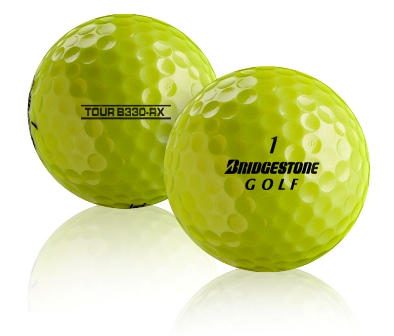 |
Seeing as you’d have to cut a ball open to see what Sowell was talking about, it’s probably best just to take his word for it. The fact that all ball manufacturers have adopted layered construction lends credibility to the claim that it helps your performance – you just need to trust the fitting system that the ball you choose has all the ‘layers’ you’ll need.
Yet another interesting aspect of the Bridgestone line is the availability of multiple colors (on some balls, such as the e6, which comes in orange and yellow (as well as white), and the B330-RX, which comes in yellow and white). Colored golf balls aren’t exactly new, but it’s been a couple decades since you’ve seen a lot of them (other than at your local mini-golf course).
There’s science here as well.
“There are a few reasons we decided to offer the optic yellow balls,” Sowell explained. “The primary would be visibility. In the color spectrum, Yellow is right in the middle of the spectrum\\\'s wavelengths, therefore, our eyes are most sensitive to this color making it the easiest to see. This is even true for people who are colorblind.”
There’s more: “Additionally, color can affect a player’s emotion or calmness. Much in the same manner Tiger wears red and Paula Creamer loves pink. They have strong feelings with these colors that add to their confidence. An additional benefit that we learned about in focus groups is that players have commented they like the uniqueness it provides in their foursome. They know which ball is theirs before they even step out of the cart,” Sowell added.
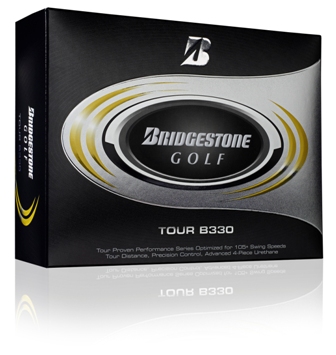 |
Having played with a recent group where two players were both using the same kind of ball (with different numbers, thankfully) and had near mix-ups on several occasions, that’s easy to understand.
Naturally, Bridgestone is especially proud of its Tour staff, which includes Fred Couples, Matt Kuchar, Davis Love III, Paula Creamer on the ladies’ tour and legend Lee Trevino. But does their play really translate to your golf course?
Sowell thinks yes, and no. “Although Bridgestone makes high performance golf balls for elite professionals, that does not mean it is necessarily the right choice for the average amateur. Much in the same manner an average player would not use the same blade irons and x-stiff shaft Davis Love III plays, they probably should not play the same ball just because Davis plays it.”
“Bridgestone offers 7 premium golf balls that can be fit to an individual’s game so that an amateur can get the same playing characteristics that DL3 prefers, but in a ball that has been designed to work for the average amateur like the B330-RX,” Sowell concluded.
Having tried the Tour B330-RX and all of the balls in the ‘e’ series, I can say that they all seemed to perform well under diverse playing conditions. A short-hitting member of our group especially liked the e7 model (pure distance), commenting that the ball just jumped off his driver and seemed to roll out farther.
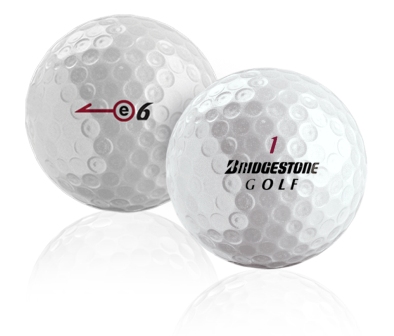 |
I liked the B330-RX the best of the group, which would lend some credibility to the fitting system. Since we don’t test scientifically (much less measure the distance), I would say the performance was best off the irons, where I found the ball to have a lively response and good carry distance – and also stopped on the greens.
I would highly recommend taking Sowell’s advice in having a qualified professional ‘fit’ you for your golf ball, and then give Bridgestone a try. And I’m sure that’s all they would ask as well.
At least then you’ll know you won’t be doing damage to your golf game by playing a ball that isn’t right for you.
Note: Bridgestone is a Japanese company – but was fortunate to escape any significant damage to its production facilities in the recent earthquakes/tsunami. The company’s U.S. business has not been affected at all.
Details:
Bridgestone Golf, Inc.
15320 Industrial Park Blvd, NE
Covington, GA 30014
General Inquiries:
Phone: 770.787.7400
Toll-Free: 800.358.6319
Free Expert Fitting Assistance:
Toll-Free: 877.411.BFIT (2348)
Web-Based Chat: Chat Live with a Fitting Expert
Text-Based Chat: Text BFIT to 55678
Bridgestone also makes golf clubs and accessories.
For more information on the company and its products, consult Bridgestone’s website: http://www.bridgestonegolf.com/
| Related Links | Comments on this article? | |
|
Maryland National Golf Club Hollow Creek Golf Club Rocky Gap Resort PB Dye Golf Club in Ijamsville Whiskey Creek Golf Club |
E-mail Jeff Rendall, Editor: jrendall@golftheunitedstates.com |












